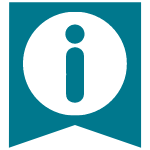EMR software is now a well-established part of most healthcare organizations’ workflows. From hospitals and enterprise health systems to single-provider practices, almost everyone uses EMR software thanks to government incentives and penalties intended to spur mass adoption.
Whether the on-premises systems favored by large health groups or the cloud-based software preferred by small medical practices, there is a wide range of solutions on the market to meet the various needs of healthcare organizations and their patient populations.
In 2022, look for continued updates to existing EMR platforms, a consolidation of brands in the industry, and healthcare providers settling into the systems they’ve chosen for their practices, given the significant upfront investment in capital and time.
Allied Market Research has reported that the global EMR software industry will reach $63.8 million by 2030, up from $30.6 billion in 2020. That represents a 7.7% compound annual growth rate over a 10 year period.
According to the report, the space is mainly driven by advancements in artificial intelligence (AI). Additionally, EMR software became central to healthcare professionals’ operations during the COVID-19 pandemic, tracking patient data and supporting efforts in contact tracing. Moreover, an expanding geriatric population in the U.S. is bolstering projections that the need for robust patient record-keeping and management will continue to grow.
Cloud-based software remains a significant driver of growth in the EMR space as well. However, on-premises software in hospitals and enterprise health systems remains a dominant segment of the industry.
EMR software and COVID-19
Before COVID-19, interoperability of healthcare IT systems and data sharing were major priorities for both regulators and healthcare organizations. While a lot of ground has been covered since EMR adoption began, there have been significant challenges in dismantling data silos between competing software companies in the healthcare space. The spread of the novel coronavirus highlighted areas where data sharing was lacking.
During the COVID-19 outbreak, healthcare providers and public health officials have encountered challenges in pooling data from the many EMR systems on the market to identify potential treatment plans. Despite the large-scale shift toward digitized health records, a uniform database of de-identified healthcare information does not exist, and creating one on the fly is riddled with obstacles.
To combat this problem, private sector organizations (including many EMR vendors) have come together to form the COVID-19 Healthcare Coalition. The coalition is working to improve access to healthcare data that could be useful in identifying effective treatment plans for COVID-19 and potentially save lives. Achieving this will facilitate communication and aggregation of healthcare data from various EMR systems in use nationwide.
While interoperability was a priority before the coronavirus pandemic, it will be imperative moving forward. Healthcare providers should consider systems that emphasize sharing data and interfacing with other platforms. EMR vendors are likely to improve their interoperability features and integrations in future software updates. Expect the COVID-19 pandemic to accelerate the movement toward full interoperability across healthcare IT systems – and to prompt public health officials and agencies to step up regulatory efforts.











 Did you know? Most medical billing services charge a percentage of monthly collections in exchange for managing a practice's billing and providing complete access to their medical software suite.
Did you know? Most medical billing services charge a percentage of monthly collections in exchange for managing a practice's billing and providing complete access to their medical software suite. Bottom Line: EMR systems help providers deliver care to patients and record their medical histories in a digital format that can be transmitted to other providers.
Bottom Line: EMR systems help providers deliver care to patients and record their medical histories in a digital format that can be transmitted to other providers. Tip: The implementation and integration phase can be time-consuming and costly, especially if something goes wrong, so make sure that your practice management and EMR systems are compatible.
Tip: The implementation and integration phase can be time-consuming and costly, especially if something goes wrong, so make sure that your practice management and EMR systems are compatible. FYI: Be sure to get feedback and buy-in from staff members and care providers alike on the software. Everyone in your organization will be using the system, so involving them in the selection process is critical to choosing the right software.
FYI: Be sure to get feedback and buy-in from staff members and care providers alike on the software. Everyone in your organization will be using the system, so involving them in the selection process is critical to choosing the right software.